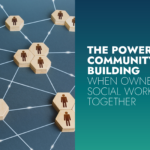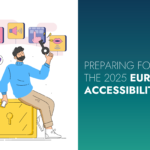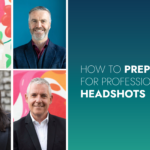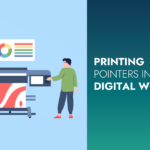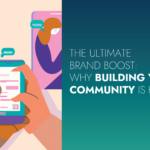Gone are the days when consumer profiling meant a simple equation of age, gender and location, slotting customers into classifications like ABC1s, and defining them based on whether they read a broadsheet or the back of a cereal box.
Before the advent of online marketing, brands used traditional metrics to understand and therefore target their customer; a simple, one-dimensional and—let’s face it—broad-strokes approach. It was a time when the ‘push-pull’ method was heavily weighted towards the push, and brands spoke at the customers; not to them, and certainly not with them.
Things have changed since then—dramatically. Now, having a deep understanding of your customers, and their persona(s), is a vital way to not only know who you’re selling to, but to connect and engage with them like never before.
The majority of brands will, of course, have some idea of who their customers are. But even with a wealth of analytical tools at our fingertips, many have a very shallow understanding of their audience. Flawed methodology leads to flawed conclusions, while outdated metrics yield redundant results; in short, it’s about asking the right questions, and asking them a lot.
Since digital mediums evolved the marketing landscape we now have access to a plethora of data and analytics, and we can churn out large sample-based research pretty much overnight. Yet too often, a brand designs the persona of what their typical consumer might look like, or worse, tries a mass-market approach of alarmingly generic groups such as ‘females aged 18-25’.
It’s important to have a fully fleshed out customer persona; a hybrid avatar that represents the traits of your core consumers. On top of basic profiling, we’ve shifted gears into psychographic profiling—so while it’s still the who (who are your customers), it’s less about the what (what do they do, what do they want) and a whole lot more about the why!
Why do they choose your brand?
How do we develop customer personas? Where do we begin?
For existing businesses who don’t fully understand their personas, or perhaps feel they have evolved over time, it’s imperative to check in. See where your customers spend their time, what’s on their newsfeed and what social media groups they are in. This will give a richer insight into their life stage, why they resonate with your brand.
When it comes to a new business, there’s a little more guesswork involved; though it seems positively quaint, this is where traditional demographics still play a part. You can examine your product or services offering, conduct research groups among different markets and develop initial personas, but it’s really after securing a customer base, repeat business, feedback, reviews, and a customer voice, that it becomes truly evident what your personas should look like.
But if you’re starting from scratch, take note; none of the above means you should wait. Research can (and should!) be conducted before a business even launches, and constructive feedback can be sought from the very beginning. Truly, there’s no such thing as starting the process too early—as long as you’re doing it right…
Here are 5 tips when creating customer personas for a new business
1. Research
As with anything, the fundamentals are key; knowing your offering inside-out; understanding how it fares against competitors in terms of price, look, and feel; and testing it with your core target market are good starting points.
When it comes to the question of Quality v Quantity, there’s a place for both. Using qualitative methods such as focus groups is a great way to get real insight and a better understanding of your personas. Meanwhile, quantitative methods like online surveys—where you’ll get a benchmark for general information around age, interests and life stages—are valuable in making sure you’re targeting the right market, and exploring if there are other markets to branch into. Remember: research is for life, not just for start-ups. Ideally, your information-gathering should be continual, and at the very least conducted with every new iteration and adaptation to your product or service.
2. Social Listening
What are your customers saying about you? What hashtags are they using? What reviews are you getting, both on your own channels and on external platforms? What are they saying about your competition?
Talkability is often identified as a goal, but the real value comes in listening. Brands need to keep their eyes and ears open at all times, to see what past, current and potential customers are talking about. Hearing about your brand, from those that really matter, will help you develop your brand’s persona. Great ways of social listening are by creating polls, running surveys, and continually asking questions to get users engaged and to find out more about them.
3. Content formats
Eye-catching infographics, well-written articles, stylish videos, and a whole lot more besides; trust us, we appreciate wonderfully creative content as much as (and maybe more than) anybody! But as well as pushing your message out, you need to ask where it lands—and, sometimes, what your primary objective really is. Is it more important to get your message across, or to hear from your customers?
Could the online world be too noisy to achieve the engagement you’re looking for, making an event or experience a better option? Are there certain audio/visual options that are more effective than others when it comes to your goals?
While you might be the expert when it comes to communicating your brand’s message, eliciting reaction and sparking conversations are a different kettle of fish—and nailing your content formats is key.
4. Digital Tools
We are blessed with technological advances that show us exactly who our customers are, particularly around the sales funnel and user experience. You can now tell who came to your website, browsed your range, went to the checkout and purchased a product—not to mention how they got there. That’s a trail of breadcrumbs that brands need to follow dutifully.
At what point did they become a customer? What made them move into a repeat customer, and which ones fell off at the checkout and why?
Tools like Hot Jar, Google Analytics, and ToTango offer brands a deep understanding of their various consumer types, and help them develop personas based on their behaviour and experience with their product or service online.
5. Periodic reviews
Your business will evolve, grow and change over time—and your customers will too. Sometimes those developments are correlated, or even causal; sometimes it will affect one persona, at other times the whole lot. Whatever the case, the important thing is that you spot it when it happens.
That’s why it’s imperative for brand managers to do periodic reviews of their audience, to see if their personas have remained the same. Some elements of a brands customer persona will remain evergreen, but over time—due to environmental factors like trends—the customer persona adapts organically. So check in with a wide-base of customers, early and often; this is one area where you really don’t want to be left behind.
Can you draw your personas? Imagine what they eat, where they shop, what they read; what interests them, motivates them, inspires them? The clearer the picture, the better the connection. If you need help, email gmiltiadou@zahramediagroup.com or connect through our Contact page.


